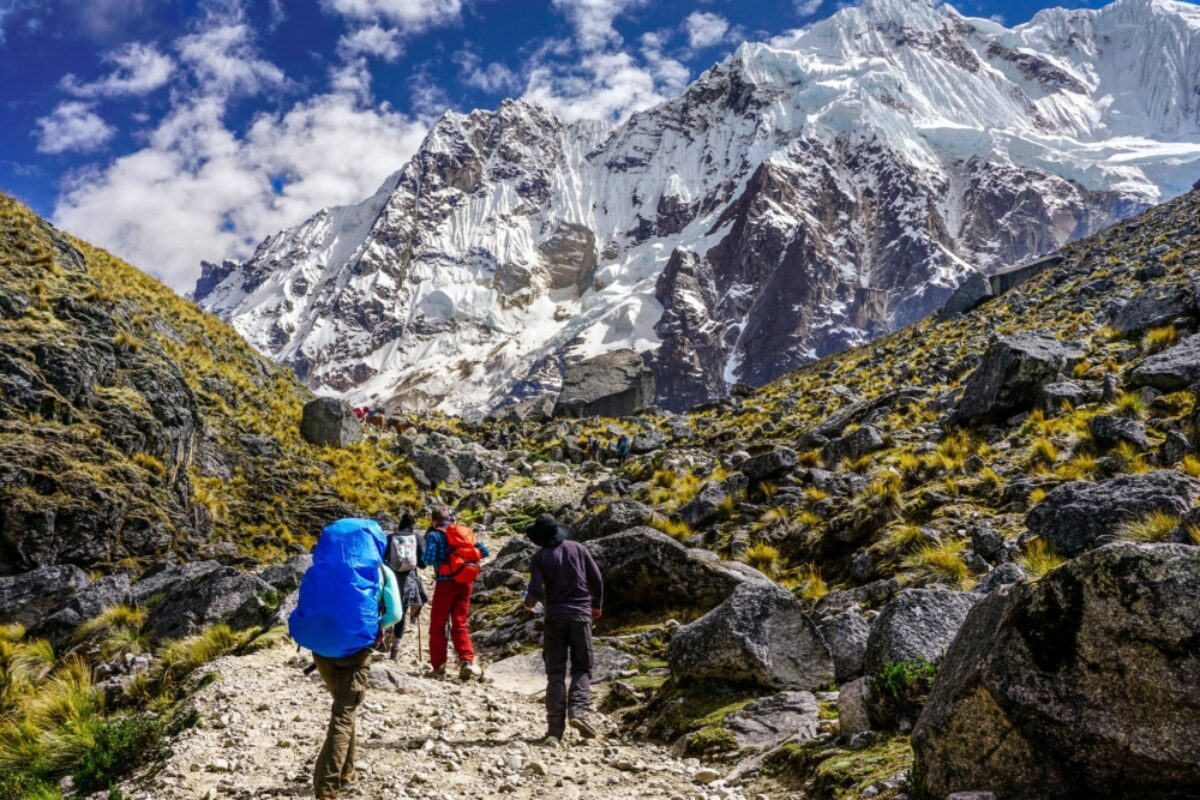Hiking the Salkantay Trek
Hiking Peru's famous "nature trek"
The Salkantay Trek is the most popular alternative to the Inca Trail, described by National Geographic as one of the best treks in the world. While there are no ruins along the way unless you do the lodge-to-lodge version, the opportunity for gorgeous landscapes is even greater than on the Inca Trail, leading it to be known as the “Nature Trek.”
The Salkantay Trek
Difficulty: Challenging
Distance: Approx. 60km (37m)
Duration: Four to five days
Max elevation: 4,630 metres
Accommodation: Camping or lodges
Start/end point: Challacancha - Santa Teresa

Hikers approaching Salkantay Mountain
What you’ll see
From snow-capped mountains down to high jungle, this trek is known for its varied ecosystems and landscapes. You’ll pass high mountain glaciers, walk along rolling fields and pastures, and end up in the high jungle that surrounds Machu Picchu.
Savage mountain
Looming large in the background of this trek is the glacier-clad Mt. Salkantay. It forms part of the fierce Cordillera Vilcabamba range, with a peak that reaches a staggering 6,270 m (20,574 ft) of altitude. Worshipped for thousands of years by the local highlanders, Mt. Salkantay takes its name from a Quechua phrase meaning "savage mountain."
How long is the Salkantay trek?
The length of this hike can vary, both in mileage as well as in the number of days. The traditional version is four days of hiking, covering a distance of about 37 miles. If you choose the much more comfort-oriented lodge-to-lodge version of the trek, you will hike for six days, covering a bit more distance but with less hiking time per day.
All trekking agencies include transportation from Cusco to Challacancha. Most include transportation from Santa Teresa to Aguas Calientes, the shuttle from Aguas Calientes up to Machu Picchu itself and the train from Aguas Calientes back to Ollantaytambo with another shuttle to Cusco.
How difficult is the Salkantay trek?
The trek is challenging, primarily because of the altitude. The highest point is the Salkantay Pass, at 4,630 m (15,213 ft) above sea level. Even after crossing the pass, although you will continue descending, there are some ups and downs that will feel very long if you’re not in great shape or not properly acclimatised.
Accommodation
If you do the traditional version, you’ll be camping for three nights and spend the fourth night in a hotel in Aguas Calientes. Your tour of Machu Picchu will be on the fifth morning.
A popular alternative to the original camping route is the Salkantay lodge-to-lodge trek. This is a very different experience, which combines the sense of accomplishment with the added bonus of spending each night in a series of luxury mountain lodges, each with its own distinct character. Replete with goose-down bedding, gourmet food, on-site masseuse and the sublime pleasure of an outdoor jacuzzi, these luxury lodges are just the remedy after a hard day’s hike!
How to book
There are no permits necessary to hike the Salkantay Trek, although this is subject to change. Solo trekking is possible but even experienced trekkers are encouraged to use a trekking outfitter for the added benefit of experienced guides and horsemen to ensure your safety and enjoyment of the experience.
Key considerations
Even for experienced trekkers and the very fit, Salkantay will be a challenge due to the altitude. Prepare yourself with plenty of cardio exercise in the weeks and months before travel, and ensure you’re properly acclimatised in Cusco before setting out.
Most tours do not include a sleeping bag, although they can be rented. Quality varies, and temperature drops to very cold, especially on the first night. It’s recommended to bring your own four-season sleeping bag or a silk liner for extra warmth.
Bring some extra cash with you to tip the support staff on your last night of camping. You’ll also pass huts selling drinks, chips, and chocolate, where small change is needed!




